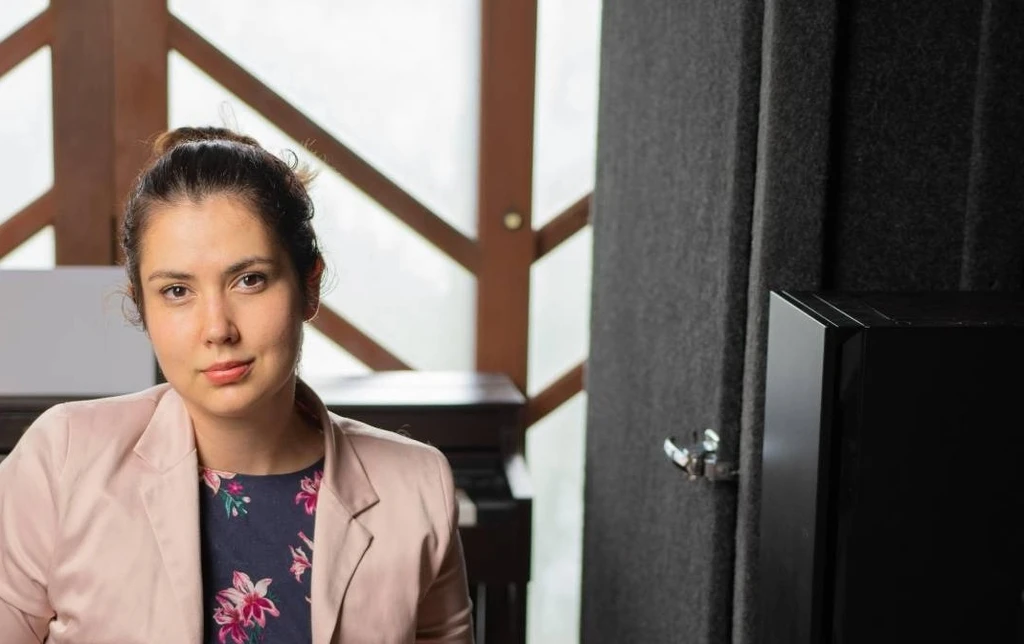Contact Amanda
Send a message and receive her reply immediately.
Feel free to write your questions and project details here - your information is safe.

That's how I fix a VO or a session if the read still doesn't sound so natural. First, I troubleshoot the overall performance. It might not take much time for a trained ear.
But did you know that there are more than 20 vocal parameters that can contribute to (or destroy) a conversational voice-over?
I don't think in all of them at once - I start with 5, and most of the time, these 5 are enough.
Let's cover the 5 most important parameters:
Whether the actor/actress gave you a good performance from where to start...
Or if you fear it won't get any better...
You can try tweaking vocal parameters, as it were knobs, one or few at a time.
Start fixing the VO or the session with the list below of 5 major elements of a conversational style.
During a conversation, the emotions rule the pace and the duration or emphasis of the words, not the pre-frontal cortex.
The rhythm is usually interesting, unique, and spontaneous, with breaths, stops, and stumbles.
It has moments of accelerando and rallentando.
There's no script in a conversation, so we are kind of searching and thinking at the time of speaking.
We are always monitoring one another in a conversation.
You can suggest some words that are important for the meaning and bring oral elements around them.
The speaking level is a range of loudness above the mumbling level (when you don't want or don't expect anyone to understand) and the assertive, incisive level (when you want to make sure someone comprehends and complies with what you're saying).
This volume requires less projection - it's one-on-one.
Nothing more than the necessary.
You can suggest the actress take one side of her headphones or turn up her feedback volume, so she can monitor her level better.
Additionally, you can ask her to speak from the throat and project less if the voice is too loud or too deep, and, if it's too airy and artificial, ask her to bring the voice more to the chest, close to the heart, and even to relax the vocal cords.
Whenever you want to make a voice-over more oral and conversational, you can soften the articulation of the words and syllables and even suspend the weight of the non-stressed syllables.
It brings to the conversation an irregular but interesting sequence of thesis and arsis - the strong and the soft beats.
Depending on the conversational level, elisions and contractions are welcome as well as the softening of the formants as a result of facial movements, like a smile.
If the VO artist is not sounding so friendly and unpretentious, you can ask for the actor to smile exaggeratedly or pretend to be a ventriloquist, and he won't be able to close the lips fully nor articulate the maxilar, the teeth, and the tongue - how the words are now pronounced can immediately recall someone smiling or being casual.
What shapes the ups and downs is also the meaning.
Depending on the reason why 2 people are having a conversation, a dynamic range can be small, which means a flatter, understated read, or can be wide, which means a free, expressive vocal silhouette.
So again, there's no rule about a wide or constrained pitch pattern for conversational voice-over.
It depends on the context.
Here, you shouldn't impose a coordinate for the sound over time, but you can use the dynamic range parameter to improve the conversational style of the performance.
Invite the voice-over artist to bring a wild card to the table.
Our ears are full of repetitive voice-over patterns that trigger resistance and avoidance.
Those patterns alone can make us immediately tag something as commercial and transactional, not sincere and honest.
So we need something casual, not sales-ly, but also special, not sooo trivial.
There's something that catches our attention: uniqueness¹
Uniqueness that comes naturally.
If a voice sounds new, not from an artist that's always recording voice-overs in the same way, chances are people will lean on it.
Bring one or more elements that are outside of the known. A new timbre, a surprise, an odd intonation... Invite novelty.
Seasoned actors can recall uniqueness faster with a low risk of absurdity, but newbies can also bring fresh ideas without prejudice.
Good or Bad? Well, we are not getting into the discussion about a voice-over professional being good or bad, or letting the situation arrive at such a point that it seems easier to give up than fix it or restart from a common agreement point.
Yes, it's a must. Knowing all these basic vocal parameters is a must for a voice-over director as it is for voice talents, as it is for singers, screen actors, speakers, or anybody who employs the voice strategically and professionally. However, most of the time (if not all the time) it is smarter to solve the problem and create something new together than simply win an argument by finding someone to blame.
Conversational voiceover is one of the most requested, most valuable and most difficult style. If you want professional assistance to get a converstional read from the voice over actor or need help to fix what's not conversational and natural in your production, you can always send us a message.
¹ We have a full article about how to add the value of uniqueness for corporate videos.
Leia o mesmo artigo em Português Brasileiro 5 Passos para uma Locução de Voz Natural e Conversada
Send a message and receive her reply immediately.
Feel free to write your questions and project details here - your information is safe.